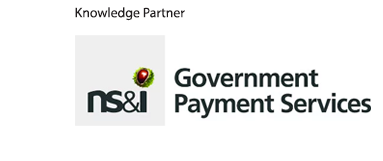Are public servants doomed to face increasing workloads forever?

At a time of acute pressure on public services, Global Government Forum (GGF) set out to gather public servants’ views on the quality of the provision they deliver, and determine whether increasing workloads are hampering progress. At a launch event for the research, supported by knowledge partner Appian, report author Richard Johnstone set out the key findings of the survey, and experts shared their reflections on how to improve service delivery.
Public servants are under increasing pressure, with a once-in-a-century pandemic, high inflation, budgetary pressures, volatility caused by global conflicts, and mass industrial action all posing major challenges that governments and civil services have to overcome.
To find out how public services are standing up to these pressures, Global Government Forum’s global citizen experience survey, undertaken with knowledge partner Appian, surveyed 1,149 public servants from around the world.
At a launch event for the research, report author and GGF executive editor Richard Johnstone said that the increasing pressure on public servants emerged as a key finding.
Asked if their workload had increased “significantly since the start of the Covid-19 pandemic” in 2020, over half of respondents (56%) said they agreed or strongly agreed. This feeling is most strongly felt in New Zealand and the United Kingdom, while a majority agree workloads are increasing in the United States, Mexico, Italy, and Canada, with the only exceptions being Spain and Germany – although even in both of those cases, more people agreed than disagreed that their workloads have gone up.
And across the globe, public servants expect their workload to increase further – 61% agree that it will, with only 12% disagreeing.
The research also found that a quarter of global respondents agreed this was leading to a fall in the quality of the work they carry out in government.
Although 48% of officials disagreed the quality of their work had fallen due to service pressures, Johnstone said it was still a startling finding that more than one in four officials agree or strongly agree that their organisation’s work has suffered as a result of demand pressures.
Respondents in the UK were most certain services had suffered. This was the only country in the survey where more people agreed than disagreed that the quality of services has fallen. Compared to the overall sample, a higher proportion of public servants also agree that their work has suffered in New Zealand, the United States and Spain.
Citizens’ expectations on the rise

Speaking at the session in response to the findings, Peter Corpe, the industry lead in UK public sector for Appian, said the key need identified by the research was to answer the question ‘why is government under the immense pressure that it is and what does it need to do to change?’
Highlighting the finding that officials rate the services they provide higher than the government services they use (a rating of 6/10 compared to 5/10), Corpe said the biggest challenge the public sector faces is around citizen expectations.
The survey also asked public officials to rate their experience on a host of other services, to provide a comparison with those provided by the public sector. They rate the government services they use below many of those offered by the private sector, with the banking and finance sector receiving the highest rating for service quality, followed by retail and insurance, energy and utilities, healthcare, and telecommunications.
Only three categories of services – those delivered by local government, airlines and pensions – were rated lower than public servants’ rating of government services.
“We all have public sector expectations based on our own experiences in the private sector world – whether that’s ordering a pizza in seconds on your phone, or getting something delivered to your door the day you order it,” Corpe said. “This sets almost an artificially high bar for what we as citizens expect, and I think that creates some challenges.”
Public services need to meet these expectations at a time when budgets and resources are constrained. “You’ve got these two things going in opposite directions, and we seem to try and make savings in places that are quick and easy, rather than the long-term strategic places,” he said.
This could be for a host of different reasons – “political reasons, technological reasons, all sorts of different factors play a part in that”, Corpe said – but it makes it difficult to set up government for long-term sustainability.
However, there were indications of a better approach in how governments around the world were able to respond to the Covid-19 pandemic, he said.
“If we look at the culture and the technology, and of what’s required to help bring organisations together… the public sector brought together multiple departments, processes, and people [to respond to the pandemic],” he said. Nations came together and globally we managed to do something that was absolutely formidable. Why can’t we do that more regularly? Why can’t we figure out what the process is, what the user need is, and do that a bit more as business as usual.”
This could be catalysed by embracing what he called “a beginner’s mindset”.
“All too often we get into a bit of a rut, into that stale world of always doing things the way that we’ve always done them and not challenging why we make those decisions,” he said. “If we can get into that beginner’s mindset – and I would point back to the Covid experience where we were forced into a situation that we wouldn’t have chosen but which made us reset and rethink about what our approaches were – then I think we can achieve greatness through that.”
Keep moving and improving

Setting out his thoughts on the research, Michael Wernick, Jarislowsky chair of public sector management at the University of Ottawa and former cabinet secretary and clerk to the privy council in Canada, said the research represented a “snapshot in a trend” in the relationship between government services and their users.
“You will never arrive at a point where people are happy and satisfied… there will always be pressure to keep moving and keep improving.”
He said it was important to remember that significant improvements had been made to public services in the last two decades – many catalysed by technology.
“The gains in speed, accuracy, customisation, 24/7 availability are incredible – beyond anything anybody would have put in a project proposal 20 years ago,” Wernick said.
However, this “incredible story” does not help public servants in the current environment, where they are struggling for attention and resources. “But I think among public servants, it’s a useful lesson that we know how to do these things. We know how to transform and change and strive for better.”
It was understandable that pressures had increased both during the pandemic and beyond, as there is now what he termed “a big snow plough of catch up going on” in government around the world on services that had been neglected, by necessity due to the pandemic response.
But, like Corpe, he too was optimistic that there might be a lasting legacy from the pandemic. “I’m more optimistic that there was an accelerator effect,” he said.
“Resistance [to change] crumbled in court systems, universities, school boards, health systems,” he said. “The public sector includes a lot of change resistance and I think we’re seeing green shoots of reform in a lot of those areas. That makes me reasonably optimistic.”
Measuring organisational health

Anne Chiang, the chief evaluation officer and director for evidence, research and evaluation policy in the US Department of the Treasury, said the research was helpful in confirming that “a lot of the struggles that we’re seeing on demand and on increasing workload is shared with so many countries and so many other public servants”.
She discussed what she called “the cost of performance” in government, and the fact that resources do not match demand.
“Michael mentioned something really interesting about the way the private sector is able to take on a lot more risk – fail fast and figure out what works and what doesn’t.
“For us in government, we have a different type of environment, so the idea of understanding how we manage risk and understand the mitigations is very different.”
To handle the increasing pressures public servants face, the Treasury is developing a framework around what she called organisational health.
Measuring organisational health is about measuring “performance, resiliency, and capacity”, and understanding how organisations are able to adapt to these increasing demands.
For example, she highlighted the increasing demand for digital services, both from service users and – as the GGF research revealed – public servants themselves. Over half (55%) of survey respondents said they expect services to be digital wherever possible.
Chiang said this is a “demand signal” that has, as Wernick also observed, already led to changes in how services are delivered.
But making further improvements amid current pressures will require boosting organisational resiliency, she added.
“It is going to take time to move major organisations – Treasury is 100,000 people strong if not more – to a future state that can tolerate but also accept and adapt, while doing the A+ work in service delivery that we have always needed to do and want to do.”
The increasing workload conundrum
The panel also discussed what steps could be taken to ensure increasing workloads are not a permanent reality for public servants.
Chiang said this is something she thinks about often, since she plans to be in public service for the rest of her career .
“I have personally experienced increased workflows, and as I’ve gone through team leadership and management I’ve seen an increase in the amount of work but not enough people to do it, or not enough technology that we can efficiently move on to.”
So conversations around delivery will need to “pivot”, she said, to boost resiliency. “It’s really thinking about the cost of performance and also our resiliency capabilities. Can we function in a space where we can invest more on, for example, resilient culture? Can we start training our leaders to be more resilient?”
Corpe highlighted that the public sector always seems to add work, but is often unable to stop services that may be no longer needed. “So there’s always going to be challenges around the workload capacity with that.”
Wernick agreed with Corpe that it is “difficult to shed old and legacy programmes”, adding: “And it usually takes some very large scale spending and programme review to do any serious pruning of the public sector.”
But he also said the public sector is “squeamish” about discussing productivity.
“Anybody who’s worked knows that there are some people who do more work than others. And that there are people in the public sector who are poor performers, and the public sector is not very good at dealing with them.”
Training and development of middle managers is therefore critical, but “it’s surprisingly hard to get focus and time and attention to that”.
This support for managers also helps unlock workforce engagement with change initiatives, Wernick said.
Corpe highlighted the finding in the research that two-thirds of respondents (66%) think that new technology could significantly improve public sector productivity.
“I want to know: what’s holding you back and what’s the inertia, because technology is not the only answer to all of these problems, but it has its part to play.”
He also highlighted the finding that only one-third of respondents said they played either a leading or supporting role in process implementation and automation in their organisation.
“If we’re not listening to two thirds of that community, then aren’t we missing a trick somewhere?” he asked.
The webinar Report launch: do government services work for citizens? was held on 17 October. You can watch the session in full on the dedicated event page.

















